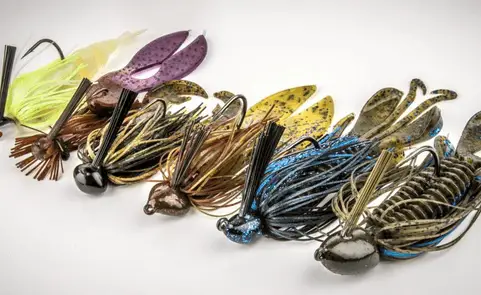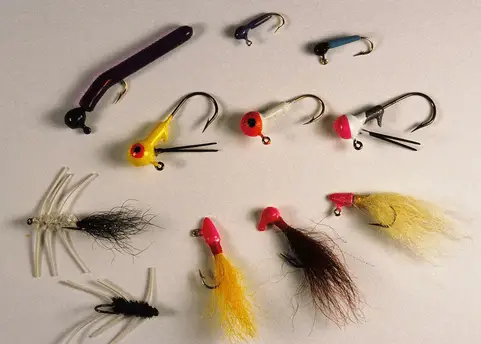To fish a jig, cast it out, let it sink, then jerk and reel. Jig fishing is a popular technique among anglers, known for its versatility and effectiveness in catching a wide variety of fish species.
Using a jig involves attaching a weighted hook with a soft plastic or natural bait, allowing it to imitate the movement of prey. This method is particularly effective when targeting bottom-dwelling fish or enticing predatory species. Whether you’re fishing in freshwater or saltwater, mastering the art of jig fishing can significantly enhance your chances of a successful catch.
We will explore the ins and outs of jig fishing, covering everything from essential gear and techniques to tips for maximizing your success on the water. So, grab your gear and get ready to dive into the world of jig fishing!
How To Fish A Jig
To fish a jig, begin by selecting the appropriate size and color for the water conditions. Cast the jig towards the targeted structure or cover, then let it sink before using a slow and steady retrieve to mimic natural bait.
Pay attention to any bites and be prepared to set the hook when you feel a strike.
Fishing with a jig is a popular and effective technique for catching a variety of fish species. Whether you’re a beginner or an experienced angler, learning properly can greatly improve your chances of success. In this section, we will cover the basics of fishing a jig, including the equipment needed, the proper technique, and some tips to help you maximize your catch.
Selecting The Right Jig And Equipment
- Choose a jig that is suitable for the specific fishing conditions, including the depth of the water, the type of structure, and the target species.
- Consider the weight and color of the jig based on the current and water clarity.
- Use a fishing rod that matches the weight of the jig, typically a medium to medium-heavy spinning or baitcasting rod.
- Pair the rod with a reel that has a smooth drag system and can handle the line weight recommended for the jig.
- Opt for a high-quality fishing line, such as braided or fluorocarbon, in an appropriate pound test for the jig and target species.
Mastering The Jigging Technique
- Cast the jig out and let it sink to the desired depth before starting the retrieve.
- Use a rhythmic motion to impart action to the jig by lifting and dropping the rod tip.
- Vary the speed and intensity of the jigging motion to mimic the movement of prey and entice the fish to strike.
- Pay attention to the bottom structure and cover, as fish often hide in these areas and are more likely to bite when the jig is near.
- Be patient and maintain a steady retrieve, allowing the fish ample opportunity to strike the jig.
- When you feel a bite, set the hook by swiftly and firmly lifting the rod tip.
Tips For Success
- Experiment with different retrieves and jig sizes to find what works best for the current fishing conditions.
- Keep track of the depth at which you get bites and adjust your presentation accordingly.
- Pay attention to the feedback from the jig, such as subtle taps or changes in weight, as this can signal fish activity.
- When fishing in cold water, slow down your jigging motion to match the slower metabolism of the fish.
- Consider adding a trailer, such as a soft plastic bait, to the jig to enhance its appeal and increase your chances of attracting bites.
Remember, practice makes perfect when it comes to fishing a jig. Take the time to hone your skills and adapt to different situations on the water. By selecting the right jig, mastering the technique, and applying these tips, you’ll be well on your way to reeling in more fish with this versatile lure.
How To Fish A Jig For Bass
To fish a jig for bass, start by choosing the right jig weight and color for the water conditions. Cast near structure and reel in slowly, bouncing the jig off the bottom to mimic a crawfish. Pay attention to any bites and be prepared to set the hook.
Points:
- Select a jig weight between ³⁄₈ to ¹⁄₂ ounce to target bass in shallow to medium depths.
- Opt for colors resembling local baitfish or crawfish as bass are visually sensitive.
- Cast the jig near cover or structure using a pitching or flipping technique for precise placement.
- Make subtle movements with your rod tip to create a lifelike action, enticing a bass strike.
- Retrieve the jig slowly, allowing it to bounce off the bottom to mimic natural foraging behavior.
- When a bass strikes, set the hook firmly and reel in steadily to control the fish’s movement.
- Experiment with different jig sizes, colors, and retrieval speeds to find what works best in varying conditions.
Best Practices For Bass Fishing
Points:
- Fish during low light periods like early morning or evening when bass are more active.
- Use high-quality fishing line to withstand the force of hooking and reeling in strong bass.
- Understand the behavior of bass in specific water bodies to predict their feeding patterns.
- Practice catch-and-release to maintain bass populations and promote sustainable fishing practices.
- Stay patient and persistent as fishing with jigs for bass can require trial and error.
- Stay attuned to weather conditions and adjust fishing techniques accordingly to maximize success.
FAQ
How Do You Fish A Jig Effectively?
To fish a jig effectively, start by selecting the right size and color based on the water conditions. Cast the jig near cover or structure, allowing it to sink. Then, retrieve it with short, sharp hops or a slow, steady retrieve.
Pay attention for any subtle bites or changes in tension on the line.
What Gear Do I Need To Fish A Jig?
To fish a jig, you’ll need a medium to medium-heavy fishing rod and a spinning or baitcasting reel with a smooth drag system. Use a high-quality fishing line with a pound-test rating appropriate for the target species. Additionally, it’s essential to have a variety of jig sizes and colors in your tackle box to adapt to different fishing conditions.
Conclusion
Mastering the art of jig fishing can lead to exciting catches and rewarding experiences. By following these tips and techniques, you can increase your success on the water. Remember to practice patience, adjust your strategy as needed, and enjoy the thrill of the hunt.
Happy fishing!


